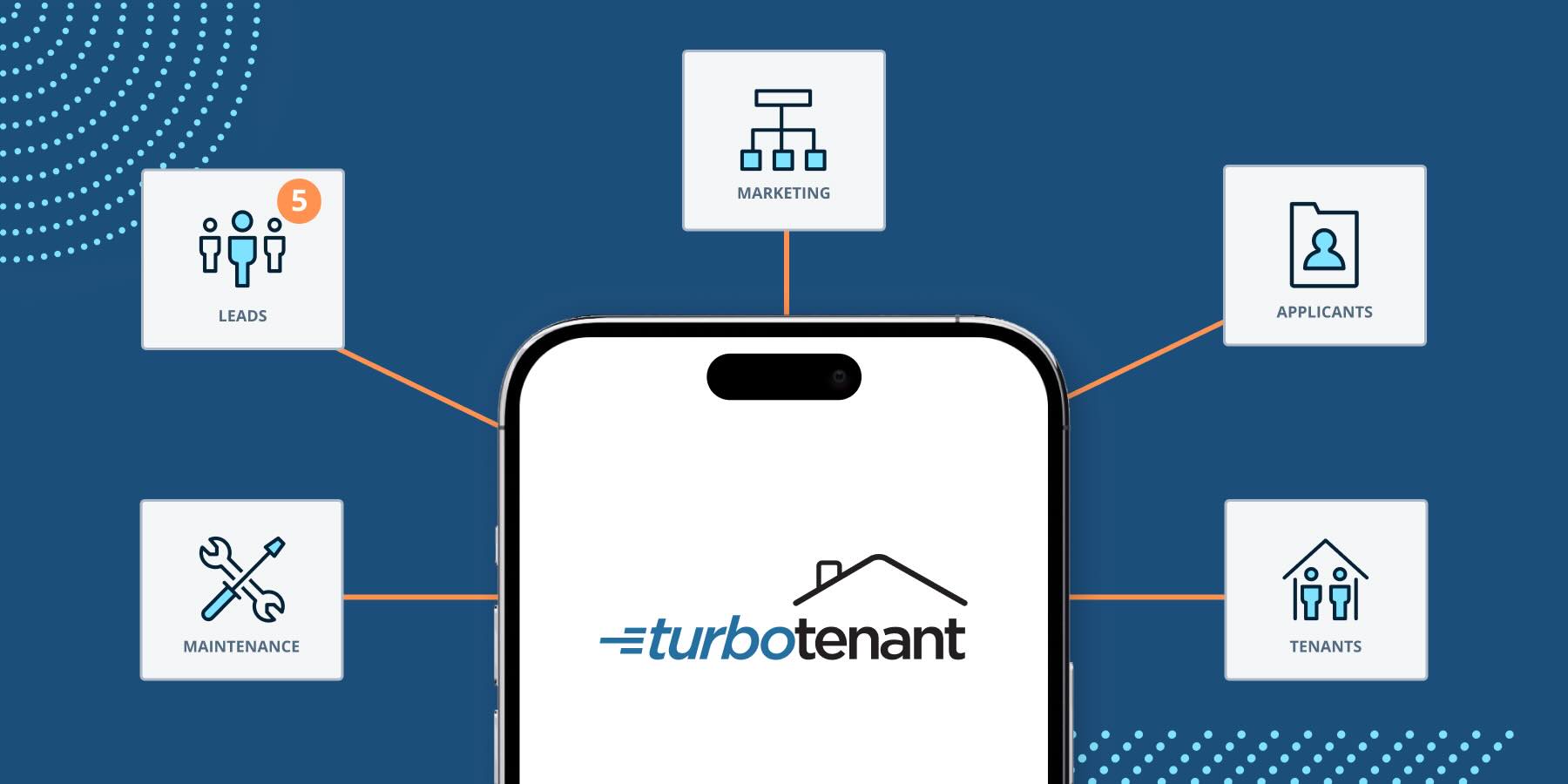The thought of being a landlord in California can feel overwhelming, and the title itself may even sound intimidating. Add in negative landlord stereotypes, and it’s easy to see why you might have some hesitation. But rest easy: Landlording doesn’t need to be complicated.
Whether marketing rental properties, sending rental applications, screening prospective tenants, or drafting legally sound lease agreements, there are numerous tasks you must juggle to succeed. That said, putting your landlord operation on autopilot is simpler than ever.
Whether you’re diving into real estate investing intentionally or becoming a landlord by chance, we’re glad you found us. Read on for everything you’ll need to successfully manage your rental and become an effective landlord in the Golden State.
Marketing. Applications. Leases. Payments.
Research the Market
Before diving headfirst into landlording, you must first understand your existing and potential rental markets.
You may already have your finger on the pulse of local real estate trends and rental conditions, or perhaps you’re starting entirely from scratch. Regardless of where you stand, remember these three words: Know. Your. Market.
Research every possible detail of potential rental markets before you decide to become a landlord in California. When studying markets, pay close attention to:
- Job availability
- Population growth
- Economic stability
- Real estate trends
- Inventory levels
- Neighborhood quality
- Affordability
- Tenant demand
- Future development plans
- Proximity to transportation, shopping, and entertainment
- Licensing requirements
The above list isn’t exhaustive, so get creative with your research, or better yet, check out our handy guide on the Best Rental Markets in California. Regardless of how you approach this step, conducting thorough market research is the first step towards profitability.
Take your market insights a step further by using our Rent Estimate Calculator. By utilizing this free tool, you can estimate (within reason) approximately how much rental income your property could generate. Of course, markets are constantly evolving, so take all numbers at face value.
Do Some Math
To continue your research, you’ll need to dive deeper into the numbers. Fear not, however, as doing so will paint an even clearer picture of your potential earnings, property costs, and overall financial expectations as you continue your California landlording journey.
Begin by asking yourself a few key questions about your property. And, for your own benefit, be as realistic and straightforward as possible with your answers:
- Will the property need significant renovations to become rentable?
- What recurring expenses will you face (property taxes, maintenance)?
- Is the property’s location desirable enough to attract consistent renters?
- Can you comfortably cover mortgage payments if the property sits vacant?
After answering these questions honestly, dig into the following critical metrics when analyzing your existing or future properties:
NOI: Net Operating Income measures property profitability after expenses and highlights your true income-earning potential.
Cap rate: The capitalization rate reveals an investment return based on property price and NOI, indicating market competitiveness and property value.
ROI: Return on Investment shows the overall returns compared to your initial investment, helping to clarify whether your property generates a sufficient profit.
Rent-to-income ratio: This essential metric measures tenant affordability by comparing rent to their monthly income. Maintaining a healthy rent-to-income ratio helps ensure you have steady and reliable tenants.
Cash flow: Another key statistic to consider is cash flow. It calculates monthly profitability after expenses. Positive cash flow indicates a healthy and sustainable rental business.
Rental yield: To calculate rental yield, take a property’s annual rental income and divide it by the property value or purchase price. A high rental yield typically means more substantial returns.
Crunching numbers to shed more light on your rental properties doesn’t have to be intimidating. TurboTenant offers easy-to-use calculators for many of these essential metrics. Use them for free to gain more financial clarity on your rental property operation.
Read Up On Local Landlord-Tenant Law
In addition to federal landlord-tenant laws, such as the Fair Housing Act, ADA, Fair Credit Reporting Act, and Servicemembers Civil Relief Act, landlords must also understand California-specific laws to remain legally compliant and protect their investments.
Covering all California landlord-tenant laws in detail would be overkill, so set aside some time to review our comprehensive California Landlord-Tenant Law Guide. We update it as laws change and fact-check it with our in-house legal team to ensure everything is up to date.
Below are some of the essential California legal regulations to consider as you move through your landlording journey. Although these laws are accurate statewide, remember that local jurisdictions sometimes enact regulations that supersede state legislation. As such, always reference local ordinances to ensure you understand laws on a micro level.
Security deposit rules: As of July 1st, 2024, landlords in California can charge up to 1 month’s rent for a security deposit unless the unit is furnished, in which case they can charge up to 2 months’ rent. Furthermore, landlords don’t need to keep deposits in interest-bearing accounts or tell their tenants where they’re holding the funds (Cal. Civ. Code § 1950.5).
Entry requirements: California landlords must give tenants at least 24 hours’ written notice before entering a rental unit. Entry must occur during reasonable hours and should be for legitimate reasons, such as repairs, inspections, or showings (Cal. Civ. Code § 1954a).
Eviction laws: In California, landlords must provide proper written notice before initiating eviction. Valid reasons for eviction include non-payment of rent, lease violations, illegal activities, and more (Cal. Civ. Code §§ 1946.2, 1161).
Rent control: California has statewide rent control through the Tenant Protection Act of 2019, which caps annual rent increases at 5% plus inflation, up to a maximum of 10% (Cal. Civ. Code §§ 1946.2, 1947.12). Keep in mind that some cities, like Los Angeles and San Francisco, have stricter local rent control laws that landlords must follow carefully.
Lease breaking: Tenants can legally break a lease in California under specific circumstances, including landlord harassment, domestic violence, habitability breaches, or military deployment.
Use Property Management Software
Once you’ve crunched the numbers, read up on landlord-tenant law, and are ready to become a proper landlord, you’ll need a tool to help you juggle your laundry list of tasks. Enter property management software.
Property management software simplifies landlord duties by centralizing responsibilities like rent collection, lease generation, tenant screening, and financial tracking. Popular platforms like TurboTenant help you automate processes, reduce errors, stay legal, and save valuable time.
In the following section, we’ll outline some of a landlord’s most essential duties and demonstrate how property management software can help customers streamline them all.
Market Your Properties
Once your California rental properties are move-in ready, you’ll need to attract reliable tenants. To maximize exposure, attract quality leads, and fill vacancies, you’ll need to create compelling and attractive listings and post them on top rental platforms.
Start by determining your rent price based on the market research you conducted earlier. Next, capture high-quality photos, videos, and written descriptions that showcase your property’s best features. Other landlords are your direct competitors, so don’t rush through this process.
Thankfully, TurboTenant makes advertising rental property significantly easier. With our software, you can instantly generate AI-assisted rental listings, add pre-screening questions, and automatically syndicate your property listings across dozens of popular rental sites.
Did we mention this service comes standard with all free accounts?
Collect Rental Applications Digitally
Once your top-notch property listings have attracted a bevy of candidates, it’s your job to learn more about them. Specifically, you’ll want to understand their employment history, rental background, income, and creditworthiness to ensure they’ll be reliable tenants.
As you may have guessed, collecting this information is simple with TurboTenant. Sign up for your free account, customize your digital rental application, enter your applicant’s contact information, and let our software handle the rest.
You can rest easy knowing that every question in your digital rental application fully complies with federal and California state screening laws. Not to mention, TransUnion will directly charge applicants the screening fee while you pay nothing out of pocket. If your rental market is highly competitive, you can cover it yourself.
Use a Legally Compliant Lease
After screening your pool of applicants, your dream candidate will hopefully present themselves. In a perfect world, they have a great credit score, sterling landlord references, zero criminal history, and a steady income to boot. (If only all applicants were this ideal.)
Once you’ve lawfully selected your next tenant, you’ll need to come to terms with them and draft up an iron-clad lease agreement. Doing so is essential to protecting your investment, setting clear expectations between both parties, and complying with landlord-tenant laws.
While hiring a lawyer to create a legally sound lease on your behalf will likely get the job done, doing so is time-consuming and expensive. Instead, utilize property management software to create a state-specific rental contract on your behalf in just 15 minutes or less.
With our Unlimited Plan, you can create unlimited lease agreements for roughly the initial consulting fee a lawyer would charge you.
Lock Down Maintenance Requests
While we’d all love to think our rental properties will stay in tip-top condition and never need repairs, reality often paints a different picture. And when reality inevitably strikes, tenants will expect timely repairs and clear communication from you, their upstanding landlord.
It’s your obligation to perform timely repairs, after all. In fact, in most states, if a landlord fails to maintain basic habitability standards for tenants, they are breaking their rental contract and the law (and risking legal and financial consequences as a result).
As such, you’ll need to stay on top of every maintenance request, either by yourself or with the help of property management software. We recommend the latter, which can automate requests, gather vendor quotes, and schedule repairs.
Collect Rent Online
Ah, rent. The oh-so-important monthly payment around which all landlord-tenant relationships revolve. Without steady rent payments from your tenants, your investment stalls, cash flows dry up, and your ability to grow your portfolio takes a major hit.
How can you make sending and receiving rent easier? By allowing your tenants to make digital online payments, of course. Landlords who accept automatic online rent payments are five times more likely to receive payments on time than those relying on cash or checks.
While collecting rent through Zelle, Venmo, CashApp, or direct bank transfers is a serviceable option, property management software provides a more seamless and functional experience and offers higher send and receive limits. Set up recurring rent payments, send reminders, and track every dollar automatically, all with TurboTenant.
Streamline Rental Property Accounting
Real estate investing is a money-in, money-out game, plain and simple. Landlords like you must track every cent of revenue and expenses, and doing so is often viewed as the most stressful part of the job, especially in the months leading up to tax season.
To prepare for the dreaded IRS audit, do everything you can to ensure your accounting and bookkeeping are locked down and your numbers are airtight. Keeping your numbers in order is a critical piece of the landlording puzzle.
While fussing with QuickBooks and juggling spreadsheets does the job for many real estate investors, this software doesn’t cater its accounting software to landlords. Thankfully, others do (and we bet you know who we’re going to recommend).
TurboTenant’s property management software, equipped with REI Hub‘s robust accounting features, is the most practical way for you to handle your rental accounting. With its intuitive interface, you can automatically track cash flow, expenses, income, profit and loss, and balance sheets, and put your rental accounting on autopilot.
TurboTenant Makes DIY Landlording Easy
Being a landlord in California may come with its fair share of responsibilities, but with the right tools, you don’t have to white-knuckle the experience. By streamlining and automating your most essential duties with property management software, success can become inevitable.
TurboTenant’s all-in-one landlord software can help you streamline every step of the rental process. We’ve got you covered from property marketing, tenant screening, state-specific lease generation, maintenance coordination, rent collection, and more.
Sign up for a free TurboTenant account today to become a better California landlord right away.





